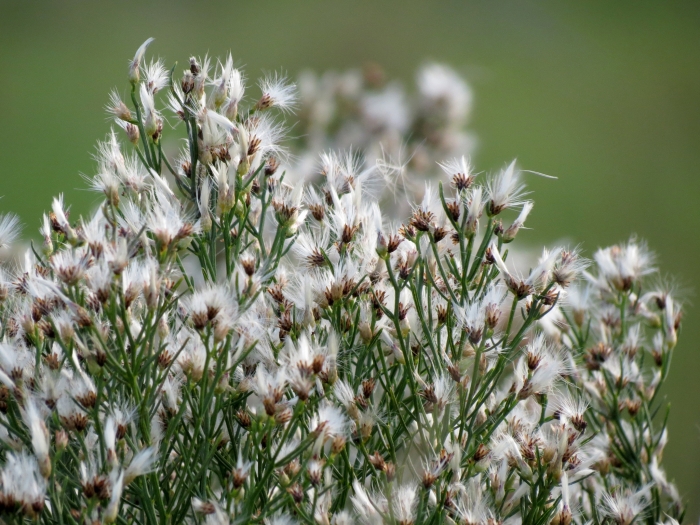Saltwater False Willow
(Baccharis angustifolia)
Saltwater False Willow (Baccharis angustifolia)
/
/

Katja Schulz
CC BY 4.0
Image By:
Katja Schulz
Recorded By:
Copyright:
CC BY 4.0
Copyright Notice:
Photo by: Katja Schulz | License Type: CC BY 4.0 | License URL: http://creativecommons.org/licenses/by/4.0/ | Rights Holder: Katja Schulz | Publisher: iNaturalist | Date Created: 2016-10-04T17:03:19-07:00 |

























Estimated Native Range
Summary
Baccharis angustifolia, commonly known as Saltwater False Willow, is a deciduous shrub native to coastal prairies, marsh edges, and tidal flats in the Southeastern United States, from Louisiana to North Carolina. It can grow up to 13 feet tall and is characterized by its narrow, succulent leaves that are adapted to saline conditions. The plant typically has a multi-stemmed, open form and may produce small, inconspicuous white flowers that bloom in the fall.
Saltwater False Willow is valued for its ability to thrive in challenging coastal environments, including areas with salt spray and poor soil. It is often used for erosion control and habitat restoration projects due to its extensive root system. In cultivation, it requires full sun to part shade, well-drained soils, and can tolerate drought once established. While it is not typically grown for ornamental purposes, its resilience makes it a practical choice for coastal landscapes. Gardeners should be aware that Baccharis angustifolia can spread aggressively by seeds and may become weedy in favorable conditions. It is also potentially invasive outside its native range, so it is important to consult local regulations before planting.CC BY-SA 4.0
Saltwater False Willow is valued for its ability to thrive in challenging coastal environments, including areas with salt spray and poor soil. It is often used for erosion control and habitat restoration projects due to its extensive root system. In cultivation, it requires full sun to part shade, well-drained soils, and can tolerate drought once established. While it is not typically grown for ornamental purposes, its resilience makes it a practical choice for coastal landscapes. Gardeners should be aware that Baccharis angustifolia can spread aggressively by seeds and may become weedy in favorable conditions. It is also potentially invasive outside its native range, so it is important to consult local regulations before planting.CC BY-SA 4.0
Plant Description
- Plant Type: Shrub
- Height: 3.3-10 feet
- Width: 3.3-4.9 feet
- Growth Rate: Moderate
- Flower Color: White, Yellow
- Flowering Season: Summer, Fall
- Leaf Retention: Deciduous, Semi-deciduous
Growth Requirements
- Sun: Full Sun, Part Shade
- Water: Medium
- Drainage: Fast, Medium, Slow
Common Uses
Erosion Control, Low Maintenance, Salt Tolerant, Water Garden
Natural Habitat
Native to coastal prairies, marsh edges, and tidal flats in the Southeastern United States
Other Names
Common Names: Saltwater Baccharis, Narrow-Leaf Baccharis, False Willow
Scientific Names: , Baccharis angustifolia,
GBIF Accepted Name: